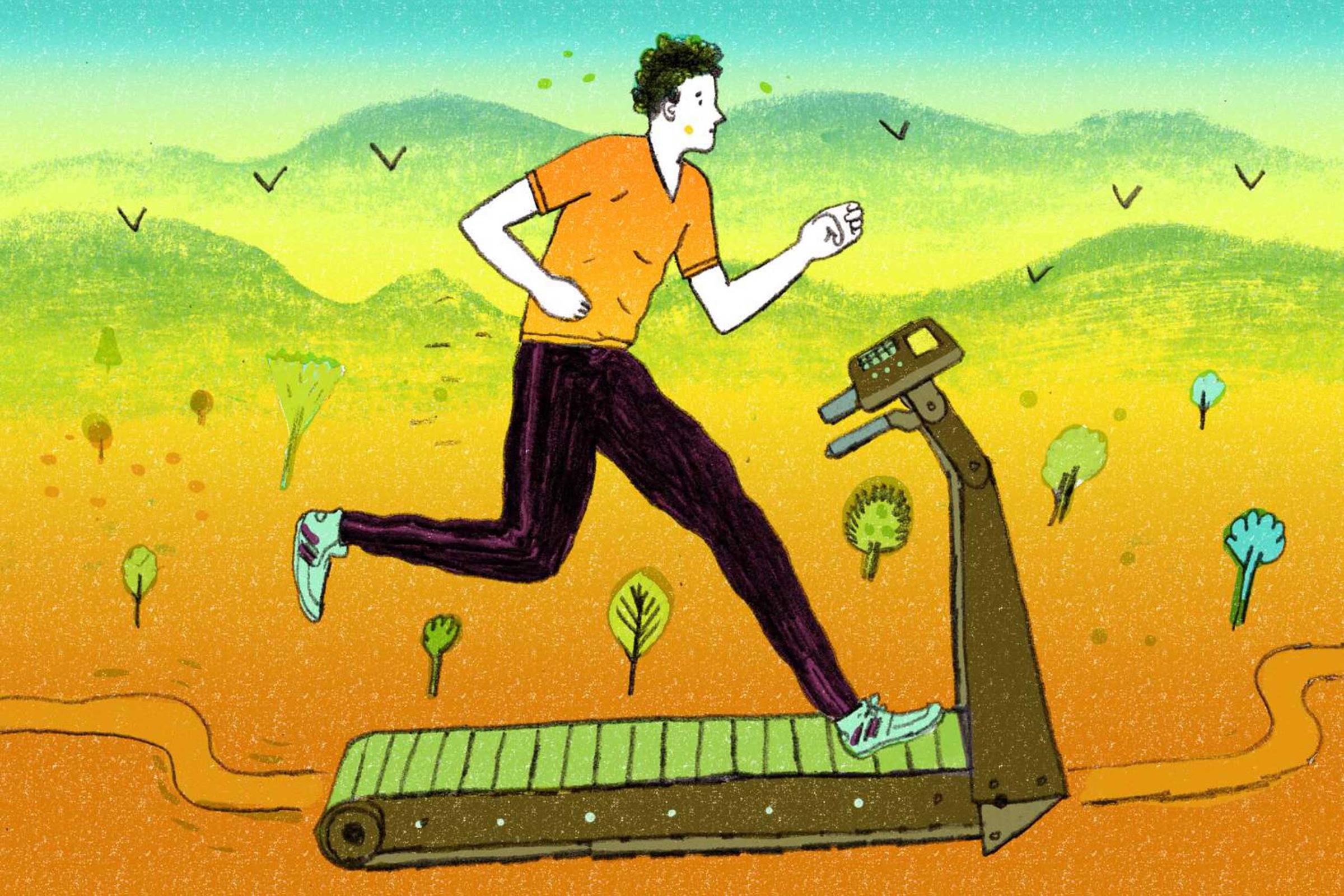To dedicated runners, running outside gets all the glory. Some purists even eschew headphones (and shoes!). But when talking about whether treadmill running is “the same” as running outdoors, it helps to pinpoint what sort of sameness matters to you.
In terms of the mechanics of your stride, there’s not much difference between running on a treadmill and running on ground, says Dr. Irene Davis, a professor of physical medicine and rehabilitation at Harvard Medical School who has studied the differences between treadmill and over-ground running. “While it feels much different to you, the leg motions and the forces experienced by your body are very similar between these conditions,” Davis says.
Read More: The Best Treadmills for Runners: The Features That’ll Help You Hit a New Personal Best
But when it comes to your risk for injuries, there may be an important difference. “Most running injuries are overloading injuries that involve muscle, cartilage, bone or tendons wearing down over time,” Davis explains. While there isn’t a lot of good research on this, Davis says those types of injuries probably occur more frequently when you repeat the exact same running motion thousands and thousands of times—as you would on a treadmill or a flat, consistent stretch of pavement.
“You strike the ground 1,000 times per foot, per mile,” she says. And if you’re running on a treadmill or a flat, hard surface, the redundancy of your motion increases your risk for these overuse injuries.
You Asked: Your Top 10 Health Questions Answered










On the other hand, Davis suspects that changing up your stride has a beneficial effect on your injury risk. The more you move in response to curbs, corners, hills or leashed pets, the less likely you are to overburden the same muscle or tendon. Running courses that include lots of slopes, speed changes, and impediments—especially nature trails—are probably safest when it comes to your risk for wear and tear, she hypothesizes.
But what about the effort involved in running outdoors as opposed to on a treadmill? The big factor here is “air resistance,” which you’ll encounter more of outdoors than you will inside, finds a much-cited study from the University of Brighton in the UK. But there’s an easy fix for treadmill runners: By raising the grade of your belt very slightly—just 1% of added incline—you’ll mimic the effects of outdoor air resistance, the study authors conclude.
There may also be a psychological factor to the debate. Lots of research has found that time spent outside, especially in green spaces like woods or parks, offers benefits ranging from improved mood and energy levels to better sleep. And another UK study—this one from the universities of Exeter and Essex—found that runners who ran outdoors in natural environments reported greater feelings of revitalization and wellbeing, and decreases in tension, confusion, anger and depression. (Just don’t forget sun protection.)
All things considered, running outdoors and on trails makes the most sense for maximizing the benefits of running. But if the weather’s bad or a treadmill is your only option, don’t sweat it. It may be an inferior alternative, but only slightly so.
Read next: You Asked: Should I Eat Before or After a Workout?
More Must-Reads from TIME
- Donald Trump Is TIME's 2024 Person of the Year
- Why We Chose Trump as Person of the Year
- Is Intermittent Fasting Good or Bad for You?
- The 100 Must-Read Books of 2024
- The 20 Best Christmas TV Episodes
- Column: If Optimism Feels Ridiculous Now, Try Hope
- The Future of Climate Action Is Trade Policy
- Merle Bombardieri Is Helping People Make the Baby Decision
Contact us at letters@time.com